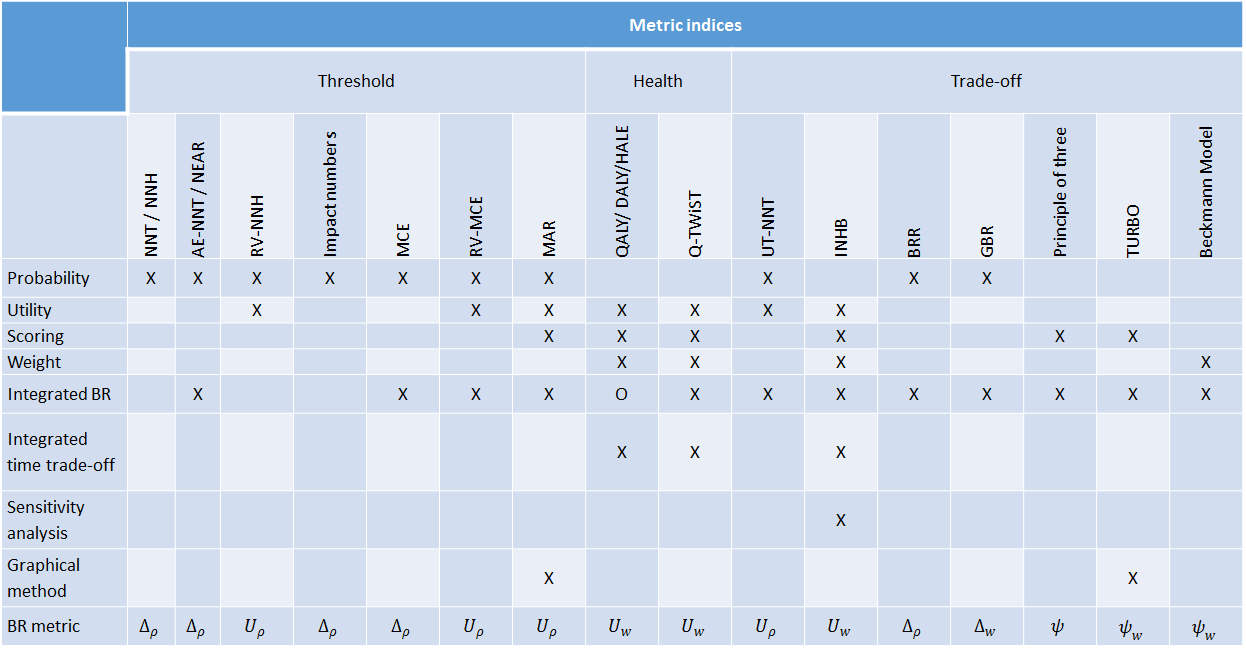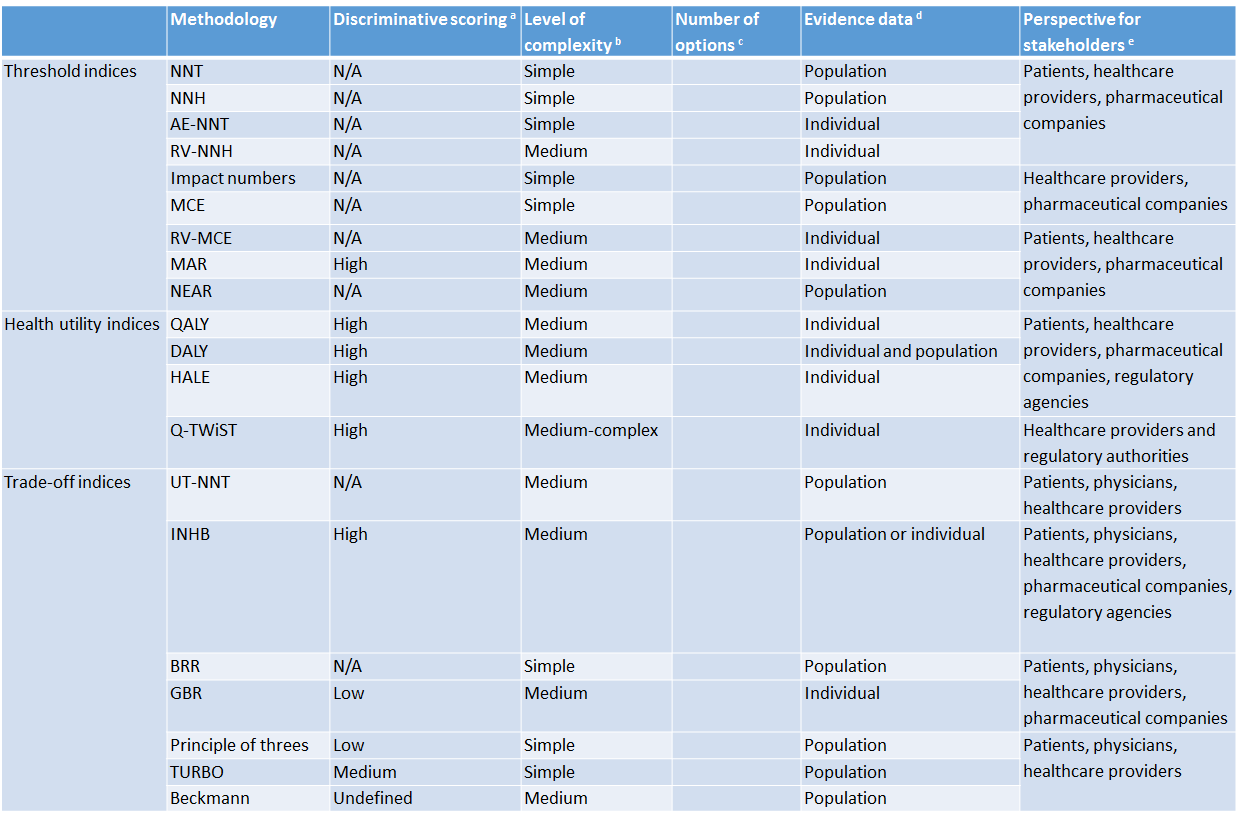Metric indices
There are three groups of metric indices for benefit-risk assessment: (1) threshold indices, (2) health indices, and (3) trade-off indices.
1. Threshold indices
This is a group of general indices that are used in benefit-risk assessments to quantify benefits and risks. These indices are derived from mathematical and statistical manipulations of probabilities and/or utilities, and are generally used as thresholds (cut-points) when assessing benefit-risk balance or in deciding best treatment options. These indices are either not designed to or are not formally used to trade-off benefits and risks.
2. Health utility indices
A particular group of specialist trade-off metric indices are the health utility indices. Health utility indices are established indices which are specific to health-related outcomes and usually have been validated internally and externally for use under certain conditions.
3. Trade-off indices
Another set of metric indices take the idea further by proposing a formal method to trade off benefits and risks. There is a fine line between metric indices in this group and the threshold indices.[link to threshold indices section] However, the quantitative trade-off indices integrate benefits and risks into a single metric index which represent the value of the trade-off.
4. Operational characteristics

X = required or a feature, O = optional, U_ρ="utility threshold" , U_w="weighted utility" , ψ="score", ψ_w="weighted score" , Δ_ρ="rates threshold" , Δ_w="weighted rates" , "blank or "-="not applicable"
5. Comparative overview

Discriminative scoring describes the number of different levels to distinguish the values (performance, preference etc.) associated with the consequences of each option employed by the scoring technique of a method: Low (<5levels), Medium (), High ( or on continuous scale), N/A = not applicable.
Level of complexity describes the technical difficulty in applying and/or understanding a method: Simple (low technical difficulty that does not require medical/statistical expertise and does not require specialist software to implement), Medium (mediocre technical difficulty that may need some but not extensive medical/statistical expertise and may require specialist software to implement), Complex (high technical difficulty that requires extensive medical/statistical expertise and may require specialist software to implement). N/A = not applicable
Number of options is the number of treatment options that can be compared simultaneously within a method. Typically a method assesses 2 options but it is not sufficient when there are multiple alternative treatments. N/A = not applicable.
Evidence data describes whether a method requires individual-level data or could be implemented using population summary data. N/A = not applicable.
Perspective for stakeholders suggests the type of stakeholders, to whom a method may be of interest and/or suitable. N/A = not applicable
